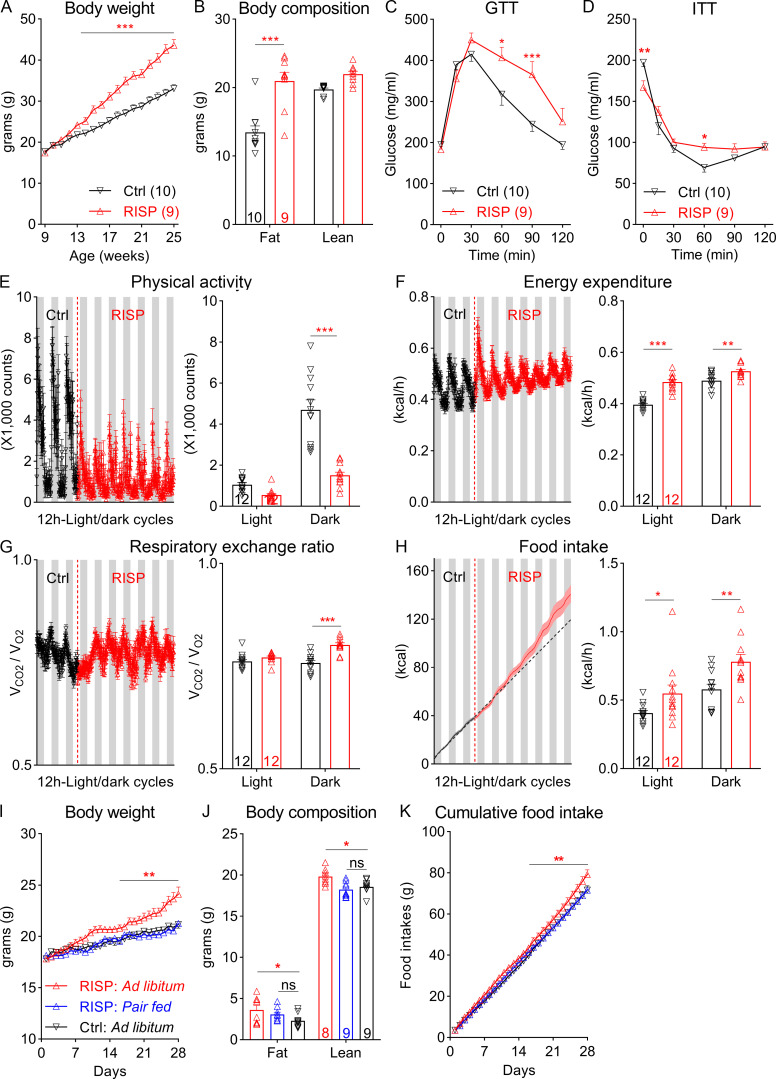Figure 1.
Chronic exposure to risperidone causes obesity and glucose intolerance in C57BL/6 mice. (A) Body weight of wild-type C57BL/6 mice fed either the Ctrl or the risperidone (RISP) diet; n = 9 or 10; two-way ANOVA; F(16, 272) = 25.53; P < 0.001. (B) Body composition of mice in A after 16-wk treatment with the Ctrl or RISP diet; n = 9 or 10; two-way ANOVA; F(1, 17) = 13.9; P = 0.002. (C) GTT after 16-wk treatment with the Ctrl or RISP diet; n = 9 or 10; two-way ANOVA; F(5, 85) = 8.224; P < 0.001. (D) ITT after 16-wk treatment with the Ctrl or RISP diet; n = 9 or 10; two-way ANOVA; F(5, 85) = 6.334; P < 0.001. (E–H) Left: traces of continuous measurement in metabolic cages; right: summarized daily average (binned into 12-h light and dark phases) before (black) and after (red) the dietary switch. (E) Physical activity, F(1, 22) = 41.49; P < 0.001. (F) EE, F(1, 22) = 26.64; P < 0.001. (G) Respiratory exchange ratio, F(1, 22) = 8.01; P = 0.01). (H) Food intake, F(1, 22) = 5.982; P < 0.05; n = 12. (I–K) A 28-d PF experiment. Body weight (I; n = 8 or 9; two-way ANOVA; F[56, 643] = 9.425; P < 0.001) and food intake (K; two-way ANOVA; F[56, 588] = 3.597; P < 0.001) were measured daily, and body composition (J; n = 8 or 9; two-way ANOVA; F[2, 46] = 7.505; P = 0.002) was measured at the end of the experiment. *, P < 0.05; **, P < 0.01; and ***, P < 0.001. Two-way ANOVA with Sidak’s post hoc tests in A–K. All data were verified in at least two independent experiments. RER, respiratory exchange ratio. Data are presented as mean ± SEM.

